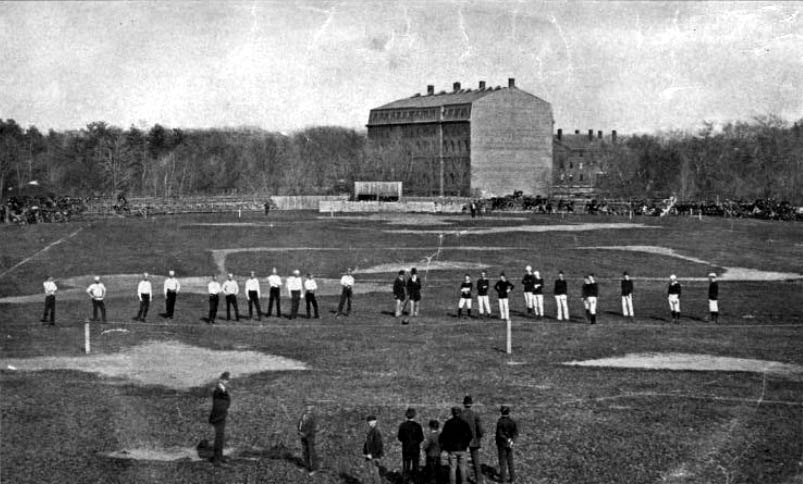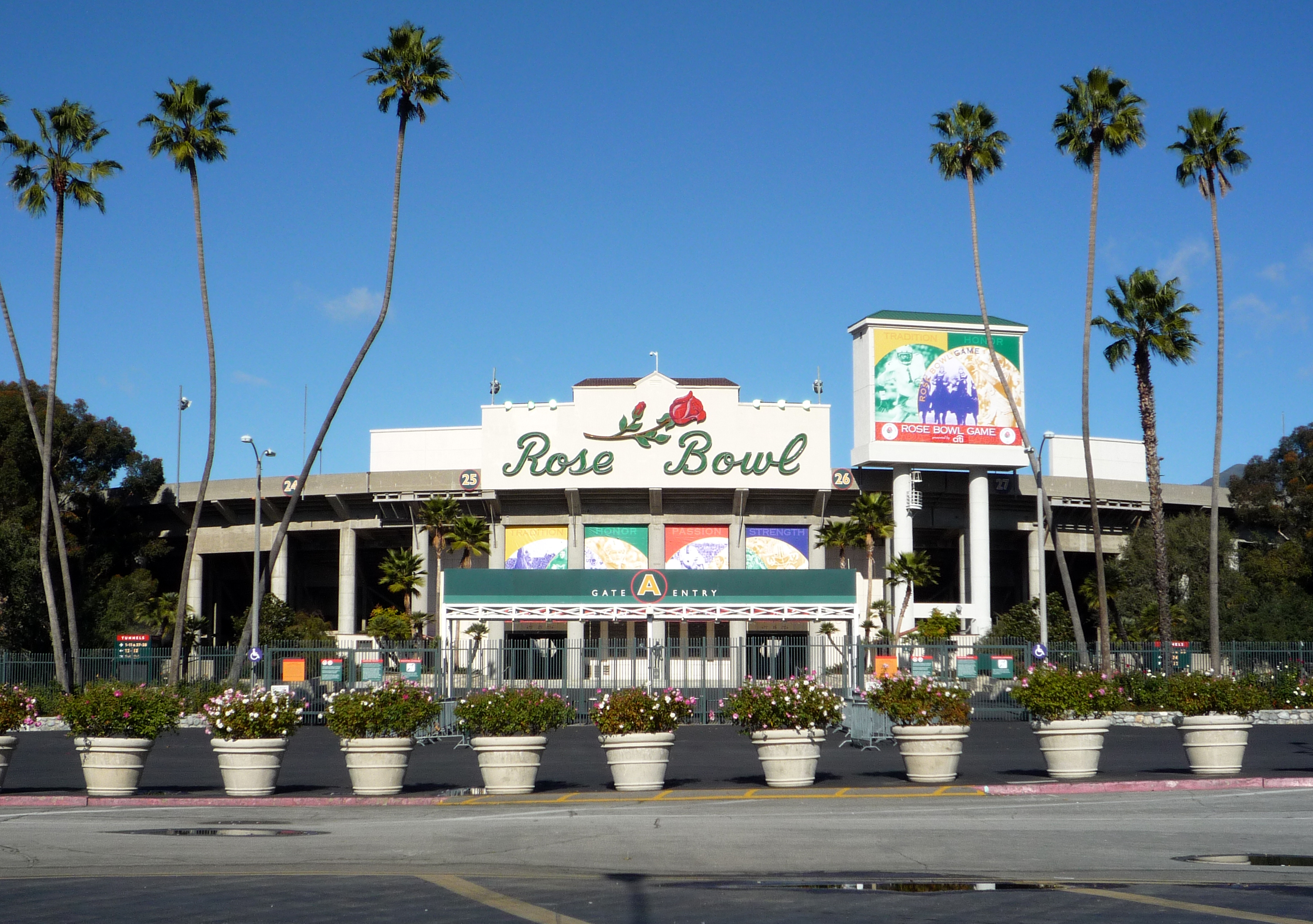|
Harbor Bowl
The Harbor Bowl was a college football bowl game played at Balboa Stadium in San Diego, California, US, from 1947 to 1949.Foldesy, Jody. "Bowls burgeon as big business", ''The Washington Times''. December 21, 1997. Page A1. Game results Game summaries 1947 Harbor Bowl The inaugural Harbor Bowl was played on January 1, 1948 between the Montana State Bobcats and the New Mexico Lobos. The game was played in San Diego. MSU ended the 1st quarter trailing 6–0, but scored 13 in the 2nd to lead 13–6 at halftime. The 3rd quarter produced no score, and UNM scored the tying touchdown on a 2-yard run in the 4th. Huburt Hackett's 35 yard field goal fell short as time expired, keeping the game tied. 1948 Harbor Bowl The 1948 Harbor Bowl had the Hardin–Simmons Cowboys play against the San Diego State Aztecs. The scoring opened in the 1st when the Cowboys scored two touchdowns to lead 14–0. The Cowboys scored 13 more and pitched another shutout quarter in the 2nd to lead 27–0 at hal ... [...More Info...] [...Related Items...] OR: [Wikipedia] [Google] [Baidu] |
College Football
College football (french: Football universitaire) refers to gridiron football played by teams of student athletes. It was through college football play that American football rules first gained popularity in the United States. Unlike most other sports in North America, no official minor league farm organizations exist in American or Canadian football. Therefore, college football is generally considered to be the second tier of American and Canadian football; one step ahead of high school competition, and one step below professional competition (the NFL). In some areas of the US, especially the South and the Midwest, college football is more popular than professional football, and for much of the 20th century college football was seen as more prestigious. A player's performance in college football directly impacts his chances of playing professional football. The best collegiate players will typically declare for the professional draft after three to four years of colleg ... [...More Info...] [...Related Items...] OR: [Wikipedia] [Google] [Baidu] |
1948 Nevada Wolf Pack Football Team
The 1948 Nevada Wolf Pack football team was an American football team that represented the University of Nevada as an independent during the 1948 college football season. In its second season under head coach Joe Sheeketski, the Wolf Pack compiled a 9–2 record, outscored opponents 480 to 133, and lost to Villanova 27–7 in the Harbor Bowl at San Diego. Though unranked in the final AP Poll, Nevada was ranked at No. 15 in the final Litkenhous Difference by Score System ratings for 1948. Stan Heath and Alva Tabor played quarterback for Nevada this season. Tabor was one of the first African-Americans to play quarterback for a major college football team. Heath was fifth in the balloting for the Heisman Trophy. Schedule Rankings References {{Nevada Wolf Pack football navbox Nevada Nevada Wolf Pack football seasons Nevada Wolf Pack football The Nevada Wolf Pack football program represents the University of Nevada, Reno (commonly referred to as "Nevada" in athl ... [...More Info...] [...Related Items...] OR: [Wikipedia] [Google] [Baidu] |
Recurring Sporting Events Disestablished In 1949
Recurring means occurring repeatedly and can refer to several different things: Mathematics and finance *Recurring expense, an ongoing (continual) expenditure *Repeating decimal, or recurring decimal, a real number in the decimal numeral system in which a sequence of digits repeats infinitely *Curiously recurring template pattern (CRTP), a software design pattern Processes *Recursion, the process of repeating items in a self-similar way *Recurring dream, a dream that someone repeatedly experiences over an extended period Television *Recurring character, a character, usually on a television series, that appears from time to time and may grow into a larger role *Recurring status Recurring status is a class of actors that perform on U.S. soap operas. Recurring status performers consistently act in less than three episodes out of a five-day work week, and receive a certain sum for each episode in which they appear. This is ..., condition whereby a soap opera actor may be us ... [...More Info...] [...Related Items...] OR: [Wikipedia] [Google] [Baidu] |
Recurring Sporting Events Established In 1947
Recurring means occurring repeatedly and can refer to several different things: Mathematics and finance *Recurring expense, an ongoing (continual) expenditure *Repeating decimal, or recurring decimal, a real number in the decimal numeral system in which a sequence of digits repeats infinitely *Curiously recurring template pattern (CRTP), a software design pattern Processes *Recursion, the process of repeating items in a self-similar way *Recurring dream, a dream that someone repeatedly experiences over an extended period Television *Recurring character, a character, usually on a television series, that appears from time to time and may grow into a larger role *Recurring status Recurring status is a class of actors that perform on U.S. soap operas. Recurring status performers consistently act in less than three episodes out of a five-day work week, and receive a certain sum for each episode in which they appear. This is ..., condition whereby a soap opera actor may be us ... [...More Info...] [...Related Items...] OR: [Wikipedia] [Google] [Baidu] |
Defunct College Football Bowls
{{Disambiguation ...
Defunct (no longer in use or active) may refer to: * ''Defunct'' (video game), 2014 * Zombie process or defunct process, in Unix-like operating systems See also * * :Former entities * End-of-life product * Obsolescence Obsolescence is the state of being which occurs when an object, service, or practice is no longer maintained or required even though it may still be in good working order. It usually happens when something that is more efficient or less risky r ... [...More Info...] [...Related Items...] OR: [Wikipedia] [Google] [Baidu] |
List Of College Bowl Games
The following is a list of current, defunct, and proposed college football bowl games. Three bowl games are currently part of the College Football Playoff, a selection system that creates bowl matchups involving four of the top-ranked teams in the NCAA Division I Football Bowl Subdivision (FBS). There are also a number of other college football postseason invitationals, as well as several all-star games. For nearly a century, bowl games were the purview of only the very best teams, but a steady proliferation of new bowl games required more teams, with 70 participating teams by the 2010–11 bowl season, then 80 participating teams by the 2015–16 bowl season. As a result, the NCAA has steadily reduced the criteria for bowl eligibility. Teams with a non-winning record (6–6) were allowed starting in 2010. Requirements were further reduced to allow teams with outright losing records (5–7) to be invited since 2012, with the team with the best Academic Progress Rate score ( ... [...More Info...] [...Related Items...] OR: [Wikipedia] [Google] [Baidu] |
1948 College Football Season
The 1948 college football season finished with two unbeaten and untied teams: Michigan and Clemson. Michigan was the first-place choice for the majority of the voters (192 of 333) in the AP Poll, but did not play in the postseason because of a no-repeat rule for Big Nine schools. Notre Dame, second in the AP Poll, tied USC 14–14 at the end of the regular season, but did not participate in any bowl per university policy at the time. Northwestern beat California 20–14 in the Rose Bowl, and Clemson defeated Missouri by one point in the Gator Bowl. Air travel to away games (as opposed to rail travel) became increasingly popular with college football programs in the late 1940s. The NCAA began permitting the use of small 1-inch rubber "tees" (not the same tee used for kickoffs) for extra point and field goal attempts beginning this year; they were outlawed in 1989. Conference and program changes Conference changes *One conferences began play in 1948: **Ohio Valley Conference ... [...More Info...] [...Related Items...] OR: [Wikipedia] [Google] [Baidu] |
San Diego State Aztecs
The San Diego State Aztecs are the athletic teams that represent San Diego State University (SDSU). San Diego State currently sponsors six men's and eleven women's sports at the varsity level. The Aztecs compete in NCAA Division I ( FBS for football). The program's primary conference is the Mountain West Conference, though the men's soccer team competes in the Pac-12 Conference, women's water polo competes in the Golden Coast Conference, and women's lacrosse competes as an independent. On May 31, 2022, it was announced that women's lacrosse had received and accepted an invitation to join the Pac-12 Conference no later than the 2024 season (2023–24 school year). News reports (especially on local radio) often mention "Montezuma Mesa" or "news from the mesa" when discussing San Diego State-related sports events. The San Diego State campus is known as "Montezuma Mesa", as the university is situated on a mesa overlooking Mission Valley and is located at the intersection of Montez ... [...More Info...] [...Related Items...] OR: [Wikipedia] [Google] [Baidu] |
1947 College Football Season
The 1947 college football season finished with Notre Dame, Michigan, and Penn State all unbeaten and untied, but the Fighting Irish of Notre Dame were the first place choice for 107 of the 142 voters in the final AP Poll in early December, and repeated as national champions. Michigan was selected for the top spot by six contemporary math systems. Second-ranked Michigan met #8 USC in the Rose Bowl and won 49–0, while fourth-ranked Penn State was tied 13–13 by #3 SMU in the Cotton Bowl; Notre Dame didn't participate in the postseason for over four decades (until the 1969 season). An unofficial post-bowl AP poll was conducted with Michigan and Notre Dame as the only options, and Michigan won by a vote of 226 to 119. During the 20th century, the NCAA had no playoff for the college football teams that would later be described as "Division I-A". The NCAA did recognize a national champion based upon the final results of the Associated Press poll of sportswriters (the Unit ... [...More Info...] [...Related Items...] OR: [Wikipedia] [Google] [Baidu] |
1948 Villanova Wildcats Football Team
{{Collegefootball-1940s-season-stub ...
The 1948 Villanova Wildcats football team represented the Villanova University during the 1948 college football season. The head coach was Jordan Olivar, coaching his sixth season with the Wildcats. Villanova was ranked at No. 24 in the final Litkenhous Difference by Score System ratings for 1948. The team played their home games at Villanova Stadium in Villanova, Pennsylvania. Schedule References Villanova Villanova Wildcats football seasons Villanova Wildcats football The Villanova Wildcats football program represents Villanova University in the NCAA Division I Football Championship Subdivision (FCS, known as Division I-AA until 2006). The Wildcats compete in the Colonial Athletic Association for football only. ... [...More Info...] [...Related Items...] OR: [Wikipedia] [Google] [Baidu] |
Balboa Stadium
Balboa Stadium is an American football and soccer stadium on the west coast of the United States, located in San Diego, California. Just east of San Diego High School, the original stadium was built in 1914 as part of the 1915 Panama–California Exposition, also in Balboa Park, with a capacity of 15,000. A horseshoe design that opened to the south, it was designed by the Quayle Brothers architectural firm and originally called City Stadium. The capacity was raised to 34,000 in 1961 with an upper deck for the San Diego Chargers of the American Football League (AFL); it was their home field from 1961 through 1966. Due to seismic safety concerns, the stadium was demolished in the 1970s and a smaller venue with a 3,000-seat capacity was built, opening in 1978. Owned by the City of San Diego, it is leased to the San Diego Unified School District, which is responsible for its maintenance. It is currently used for professional soccer and high school events (football, soccer, track, ... [...More Info...] [...Related Items...] OR: [Wikipedia] [Google] [Baidu] |


